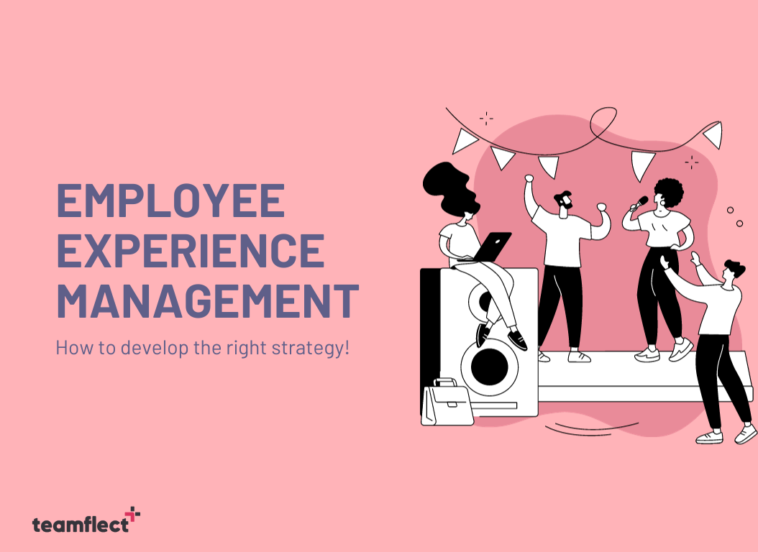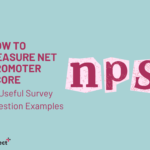Employee experience management is one of those concepts that has always been around without being actually labeled. In an era where employee retention is truly the name of the game, creating a positive experience for your employees from start to finish is more important than ever.
That being said, catering the entire experience of working in your organization to make sure everyone is happy is easier said than done. That is why employee experience management is a multi-faceted discipline of performance management and human resources that covers a lot of ground.
That is why we prepared this comprehensive guide on employee experience management for you. We will be going over each aspect of employee experience and how you can manage employee experience effectively at every single touchpoint. So without further ado, let’s dive right in.
Table of Contents
What is employee experience management?
Employee Experience Management is the practice of understanding, designing, and enhancing every touchpoint an employee has with their employer throughout their journey within the company.
Employee experience management is comprised of everything from the first interaction during recruitment, to employee onboarding, to the day-to-day work experience and even post-employment engagement.
If you examine any article on HR trends post-2020, you will notice that having your employees be your brand ambassadors is always a relevant and necessary practice. Achieving that level of engagement and positive feedback is going to require a lot of hard work and some meticulous employee experience management.
In order to manage the employee experience, we need to make sure we are defining it properly. So here below you will find all the components that go into the employee experience.
How do we define employee experience?
Employee Experience is the holistic journey and overall interactions an individual employee has with their employer throughout their tenure with the organization. As we’ve stated before, employee experience management encompasses every aspect of the employee’s interaction with the company, from the initial recruitment stage to the eventual exit from the organization. These touchpoints include:
1. Recruitment
At the outset of the employee journey, the recruitment phase focuses on how the organization attracts, engages, and selects candidates. First impressions, last.
That is why the ideal recruitment experience requires clear communication, transparency, and respectful interactions, significantly influencing prospective employees’ perceptions of the organization. While first impressions do have a tendency to stick around, you will have one more opportunity to alter them.
2. Onboarding
The onboarding stage represents a pivotal moment in the employee journey, entailing the initial integration of new hires into the company. An effective onboarding process is the best way to make sure your employees are acclimated to your organization properly.
The onboarding process is also the final opportunity to remedy any negative impressions made during recruitment. After onboarding, your new hires will have a rather more solid outlook on your organization.
3. Employment
The core of the employee experience lies within the employment phase, encompassing all interactions and touchpoints throughout an employee’s active tenure. It involves the day-to-day work experience, the organizational culture, training and development opportunities, communication practices, recognition mechanisms, and work-life balance.
The easiest way to define positive employee experience throughout the employment process is having the employees feeling valued, and engaged while having ample chances for growth and development.
4. Exit
The employee experience extends beyond an employee’s departure from the organization. The exit phase involves the departure process, which may include exit interviews, knowledge transfer, and offboarding procedures.
A well-managed exit experience acknowledges the contributions of departing employees and serves as an invaluable opportunity for the organization to gather feedback for continuous improvement.
How to manage each employee touchpoint?
Understanding the employee experience is not a one-size-fits-all concept. It’s a multifaceted journey that employees go through during their tenure with an organization. To effectively manage the employee experience, it’s crucial to recognize and address each stage.
As we go over each stage, we will also be discussing how you can use digital tools to manage each employee experience touch point effectively.
1. Building the perfect onboarding program.
The employee experience begins before someone is officially part of your organization. The recruitment process sets the tone, from the initial job posting to the interview and selection.
Effective onboarding processes are equally important, ensuring that new hires are welcomed, integrated, and ready to contribute from day one. This is where you can take advantage of employee onboarding software.
Onboarding new hires through Microsoft Teams
One of the best ways to implement a paperless onboarding strategy is to use employee onboarding software. While there are plenty of top onboarding software, the best option for those organizations using Microsoft Teams is Teamflect.
Assign Automated Onboarding Tasks:
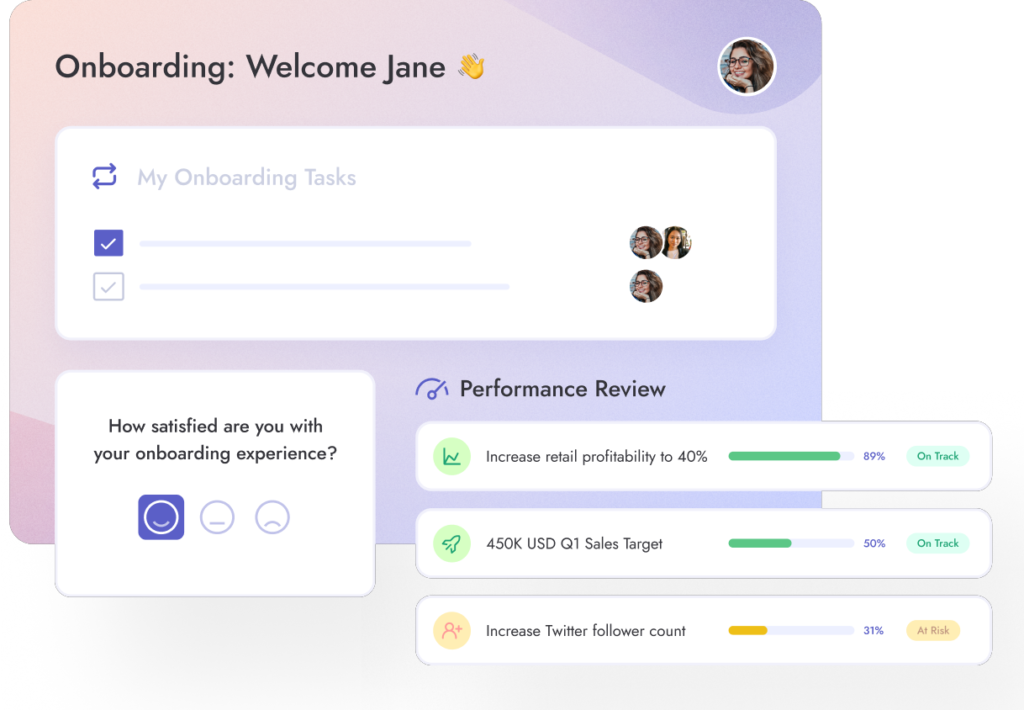
Teamflect users can create groups of automated onboarding tasks for each department. Once a new recruit joins the organization, they will already have their onboarding tasks assigned and ready to go!
Onboarding is one of the most confusing timeframes in terms of the employee experience and automated onboarding tasks help mitigate that confusion, resulting in effective employee experience management.
When the chips are down automated onboarding tasks give your new hires a sense of direction and belonging.
Onboarding Surveys & Reviews
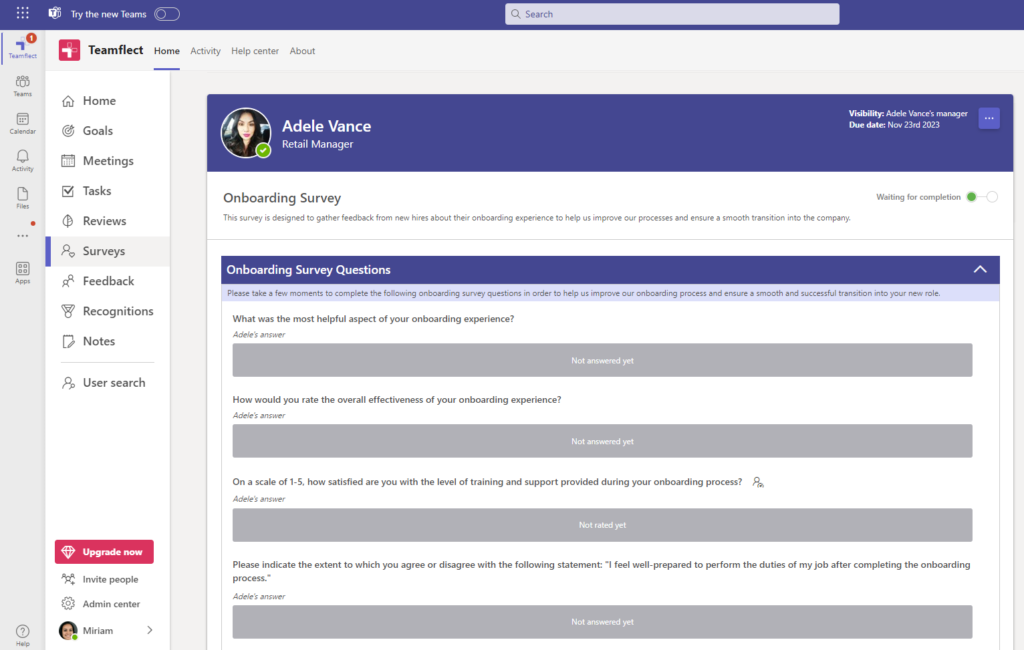
Regular feedback and input are some of the most important aspects of running a smooth employee onboarding program as well as employee experience management as a whole. Conducting onboarding surveys and reviews not only provides leaders with information on the new hire’s performance but also insight into the efficacy of the program itself.
Teamflect users also have the option to automate onboarding surveys & reviews so they are sent out to new hires automatically.

Just create a custom automation scenario inside Teamflect and start automating your onboarding surveys and reviews, streamlining the entire onboarding process.
2. Keeping Your People Engaged Throughout Their Employment
Those who use the phrase “It’s not how you start but how you finish.” often neglect a pretty important chunk of the process. Perhaps the most complex bit of employee experience management occurs not in the onboarding or exit but throughout the day-to-day of employment.
Day-to-Day Work Experience: The heart of employee experience management lies in the day-to-day work environment. This stage includes the employee’s interactions with colleagues, managers, and the organization’s tools and systems. A positive day-to-day work experience is pivotal for employee satisfaction and productivity.
Workplace Culture: The culture of your organization profoundly influences the employee experience. A healthy workplace culture fosters trust, collaboration, and innovation. It’s crucial to create an inclusive and diverse environment where every employee feels valued and empowered.
Training and Development: Continuous learning and development opportunities are essential for employee growth and engagement. Organizations that invest in their employees’ skills and knowledge often see higher job satisfaction and long-term commitment.
Boosting Employee Engagement Through Technology
One of the most empowering ways of boosting employee engagement goes through implementing a rewards and recognition program. One of the easiest ways to do so is to use recognition software that is integrated into your main communication and collaboration hub. For Microsoft Teams users, this would be Teamflect.
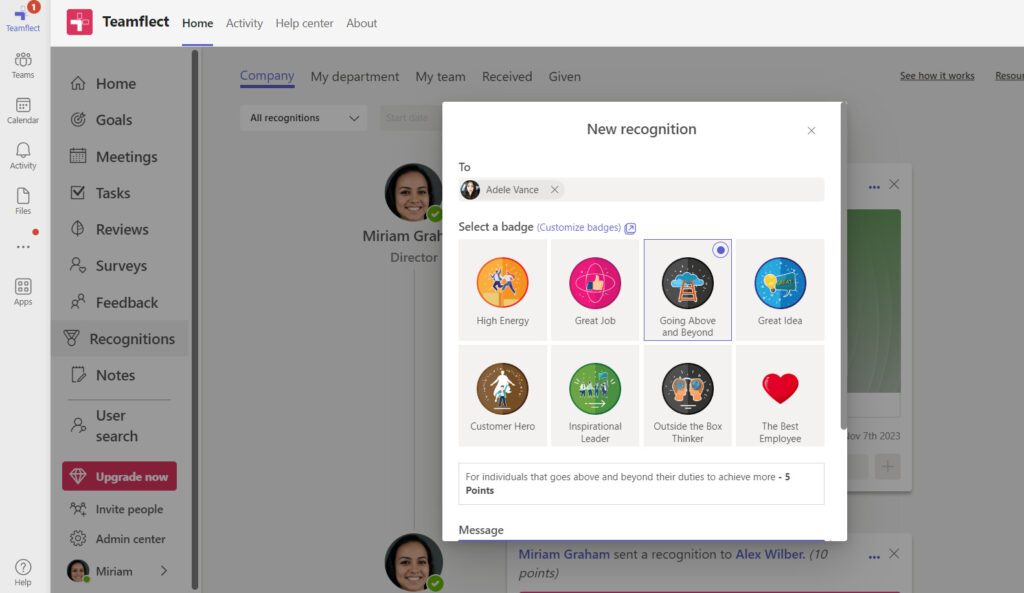
You can either simply fire up Teamflect’s “Recognitions” module and send a new recognition, or just send a recognition badge through Microsoft Teams chat. Practicing recognition on a daily basis is one of the easiest ways of empowering your team.
You can always assign custom points and values to each recognition badge and use those points to build an employee rewards program. You can even toggle the leaderboard view inside Teamflect for a healthy dose of friendly competition!
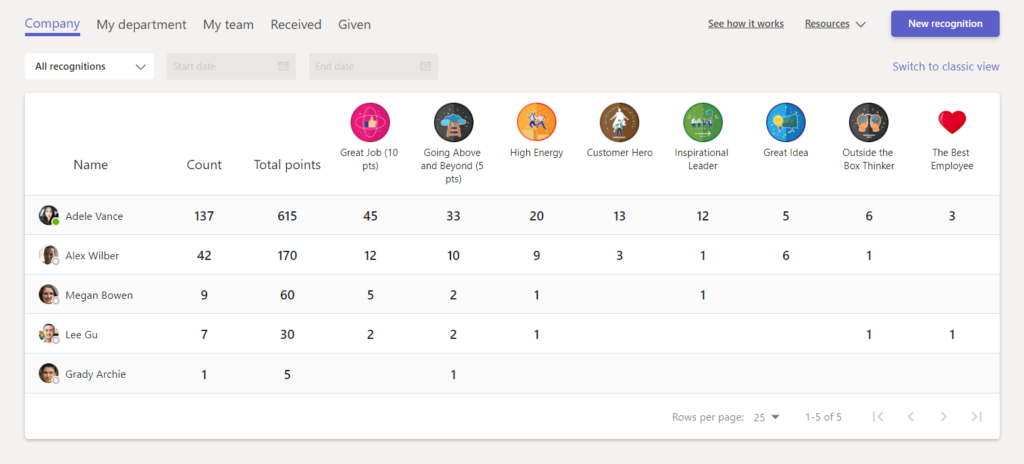
This brings a much-welcome sense of gamification to your day-to-day operations and employee experience management practices.
3. Post-Employment Stages
As we’ve said previously employee experience management strategies should include more than just the average employment durations. Departures are a part of life and they should definitely be a part of employee experience management.
When the chips are down, employee experience management is similar to an NPS survey where you ask people: “How likely are you to recommend my organization as a place of work?” The two suggestions below can work wonders when it comes to leaving a positive taste in your employees’ mouths.
Exit Interviews: The way an employee’s departure is managed impacts their overall perception of their time with your organization. Conducting exit interviews allows for honest feedback and can provide valuable insights for improving the employee experience for current and future employees.
Alumni Network: Even after an employee leaves, their connection to the organization doesn’t have to end. Many companies maintain alumni networks to stay in touch with former employees, creating opportunities for collaboration and rehiring.
Employee Exit Interviews Inside Microsoft Teams
Even though we know it is common practice, we don’t necessarily condone conducting exit interviews or any other form of performance appraisals through Excel or Word performance review templates. Using analog performance review techniques makes conducting reviews hard and analyzing them even harder.
You can instead opt for performance review software with fully integrated review templates such as Teamflect.
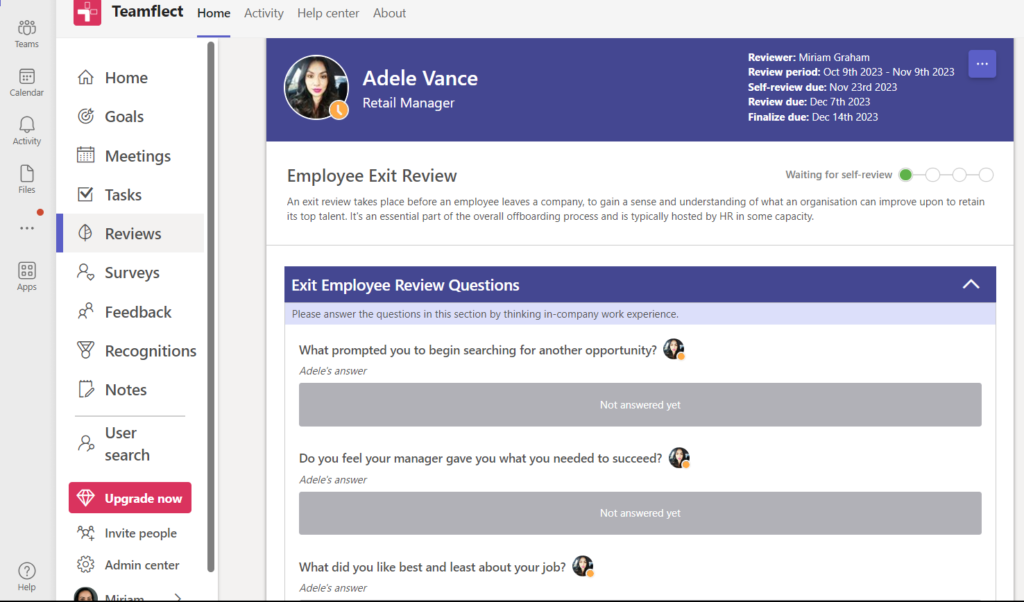
Teamflect’s employee exit interview templates come preset with the app so all you have to do is:
- Go into the “Reviews” module.
- Select “New Review”
- Select your desired review template.
- Send it away.

Teamflect users also have access to Teamflect detailed reporting and analytics capabilities. These reports help you identify some of the recurring themes behind employee departures and make the necessary changes in the employee experience in your organization.
Conclusion
Recognizing and managing these key stages of the employee experience is vital for creating a cohesive and positive journey for your workforce. Each employee experience management stage presents unique challenges and opportunities for improvement, ultimately influencing the long-term success of your organization.
Managing employee experience isn’t something you have to go at it alone. Not anymore. There are plenty of incredible performance management solutions available and we are proud to be the best for those in the Microsoft Teams ecosystem.
You can try Teamflect for absolutely free without signing up, for up to 10 users. No time or feature limitations! To learn more, you can schedule a free demo by clicking the button below!


